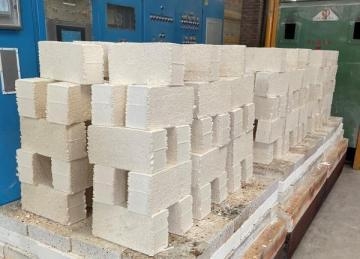Since 1919, IFB Refractories has been cultivating a historic craft in the Centre-Val de Loire region. However, that has not stopped the centuryold company, which has been awarded the “Entreprise du Patrimoine Vivant” (Living heritage company) label, from continually modernising its production processes. Three furnaces with temperatures of up to 1500 °C, operating 7 days a week, 24 hours a day, and three 70-meter long drying tunnels are used to manufacture low-density insulating fire bricks made from a mixture of clay and saw dust from the region. Once fired, the bricks are ground to adjust their dimensions to the required specifications, and any grooving and drilling operations are carried out. This grinding phase is crucial as 80% of production is assigned to this machining centre. “We wanted to fine tune our maintenance methods with a view to improving the reliability of this equipment and maximising its operating time. We asked Cetim to support us in this process,” disclosed Jean-Luc Lesage, the company’s CEO.
A structured preventive maintenance plan
As part of the project, the aim was to prioritise the machine’s maintenance operations and prepare a consistent preventive maintenance plan. The FMECA (Failure Modes, Effects and Criticality Analysis) method was used, drawing on the operational experience of the machine’s maintenance and control technicians. Based on the functional and organic breakdown of the equipment, a preventive maintenance plan was defined for each subassembly. A number of components will now be checked at specific intervals, while others will be replaced systematically, either every year or every five years. “This maintenance programme is now operational. It is being implemented by our teams, who have adopted the FMECA method, which we now intend to use for our other production equipment,” added Jean-Luc Lesage.



